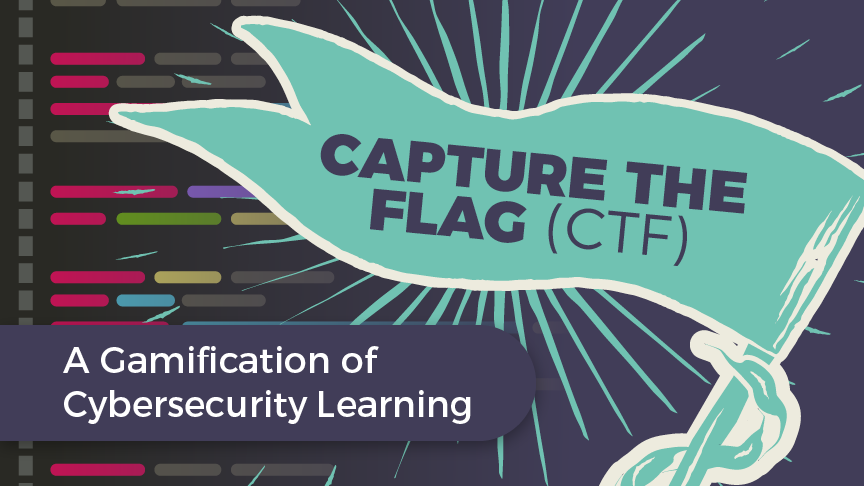What is Capture The Flag?
Capture the Flag (CTF) is gamification of cybersecurity training. Let’s look at what this means. Capture the Flag is a game that has been played by children on school playgrounds and in backyards for years. Two teams face off, each with a flag at homebase, and the objective was to take the other team’s flag. It is now also a video game mode and a method of computer learning. When incorporated into cybersecurity training and processes, CTF is a competition for both cybersecurity professionals and students alike. The competition is used as a learning tool and skill builder for everyone who is interested in cybersecurity and can help sharpen the tools they have learned during their training.
As a fellow CTF contestant and a college student at the time, I have been in CTA finals against the FBI, professional white hackers, and other students! No pressure, none at all!
History and Purpose of Capture the Flag (CTF)
Using CTF competitions for cybersecurity training has its origins in the 1990s, and it made its original debut at HoHoCon, a hacker conference in Houston, Texas. In 1996, it made a big splash in Las Vegas, Nevada, at DEFCON, the largest cyber security conference in the United States. CTF competitions are now held globally, without borders, via the Internet. International teams are excited to compete against each other for different types of prizes and bragging rights.
The purpose of CTF competitions is to enable participants to learn new skills, give them hands-on experience with cybersecurity, and help them sharpen the tools they have learned during their training. Participants can play alone or in a team, using different skill sets to take on challenges with varying degrees of difficulty. Once they find their flag by solving a challenge, they receive points.
What Are Some CTF Training Advantages?
- The competitions build critical thinking skills in practitioners.
- Participation shows tenacity and passion to both current, and future employers.
- If you compete with a group, it shows you are a team player.
- The competitions increase learning through extracurricular activities.
- Participants can “get their hands dirty in a safe environment.”
- Participants are allowed to fail to then eventually succeed (failure is always an option).
- It’s a game! So, why not?
CTF Competitions
CTF competitions simulate real-world scenarios in a gamified platform. The competition is complete with a mechanism for awarding points. This is typically based on how fast the challenge was solved, difficulty, or both. The scores for all challenges solved in a CTF are combined to determine the winner.
There are many different types of CTF competitions:
- Attack-Defense: Teams launch attacks against server software with vulnerabilities that is set up and audited before the competition, hoping to exploit the vulnerabilities they discover.
- Red Team/BlueTeam: In this style of event the red team attempts to get flags while the blue team attempts to defend the various flags from being captured. There is also a Red Team only competition, where teams try to capture various flags without a team defending them.
- Jeopardy: This competition has “questions” (tasks) in a range of categories like in the game show Jeopardy! For each task solved, teams get flags that are submitted for points, and these tasks need to be solved in order. The harder the task, the more points you earn. When time is up, the team with the most points is the winner.
- Network Packet Capture: Network traffic is stored and captured in a packet capture (PCAP). In this popular CTF challenge, a player or plays must recover or reconstitute a transferred file or transmitted secret from a PCAP file.
- Mixed CTF: This competition combines the jeopardy and attack-defense challenges. Successful teams must complete security challenges while simultaneously hacking into target vulnerable systems, maintaining access to these machines and defending them against their competitors.
Gamification Developer Career Projections
Gamification is one of the fastest growing training fields, and many companies are embracing it. As the world becomes more technology dependent, the need for trained developers and cybersecurity experts in all areas will increase. Becoming experienced in CTF competitions can boost your career, as can developing CTF gamification. So, we encourage you to investigate and try out one of the many free CTFs out there. You may discover that Cybersecurity CTF gaming is not only addictive, exciting, and fun, but it can help you enter a new phase in your career by becoming an expert in cybersecurity training and CTF gamification practices.
Posted by: Tim Stover

